The distinctive propellers of the Bombardier Q200 airplane blurred part of my peripheral as I stared out into the Atlantic Ocean. The bizarre realization that Kaelin and I are flying towards a small island in the middle of the Atlantic had yet to settle in. I began to recall staring wistfully at my laptop during lunch break, watching YouTube videos of travelers exploring the Azores Islands, a remote and quiet part of the globe with cliffs and rolling green hills grazed on by dairy cows. Such an unusual paradise compared to my 5th floor office with a concrete parking garage as my view.
And here I am, aboard a plane which is to land on Faial Island. In the middle of the Atlantic Ocean.
Are you unsure to take the journey? Do the trepid unknowns of flight bookings, language barriers or vulnerable tourist-moments convince you to stay put in your cubicle, the hidden gemstones of rugged mountains and cobblestone streets left to remain as pictures in a book?
They scared me. For years I dreamt of exploration behind a book, safe from the unknown…yet never satisfying that raging thirst for adventure.
No more hiding, I say!
Embrace the fear. Begin to peregrinate.
Why not start with me? Follow along as I provide 10 reasons why your footsteps should meander along my pathway to the Azores Islands.
The journey begins after a 2.5 hour flight from Lisbon to Sao Miguel Island. Well past normal sleeping hours, Kaelin and I made our way to the rental car lot and drove towards our Airbnb in Ponta Delgada.
As we drive along the coastline, dark cliffs shrouded the islands interior, while the ocean’s black waves clouded the vast Atlantic view. It was only until the next morning that we were able to see how precarious yet fantastic the roadside views were.
On one side, cows grazed on pastures alongside the hilly terrain, platformed by stone walls leading up to the island’s peak in the center. On the other, sheer drop-offs along the roadside led straight to the crashing Atlantic waves several dozen yards below.
Through my time in the Azores, I noticed very few tourists, mostly from other European countries. Our exploration of the less populated areas was inhabited mostly by farmers and fishermen.
A most interesting interaction I had was in approaching a group of elderly farmers dressed in well-used overalls and caps, with one of the men casually resting a flinklock rifle over his shoulder. We were turning a corner when they suddenly appeared in the middle of the road. I was already uncertain whether the road we were traversing was private property or not. The route was to a bluff overlook on the north coast of Sao Miguel, and relied heavily on Google Maps for guidance.
We slowed to a stop as the men eyed us warily. They talked among themselves in was I can only assume was Portuguese, communicating with gestures in a somewhat excited manner. To my relief, they began to move aside of our car, a positive sign that we were indeed on public roads and heading hopefully towards our destination.
A sense of isolation and unknown surrounded us as we journeyed on. From a lighthouse watching over an ancient volcanic wasteland, to a quiet botanical estate the Azores Islands hold plenty of locations demonstrating the raw beauty of untouched earth and enough hidden history to keep you inspired in your artistic endeavors.
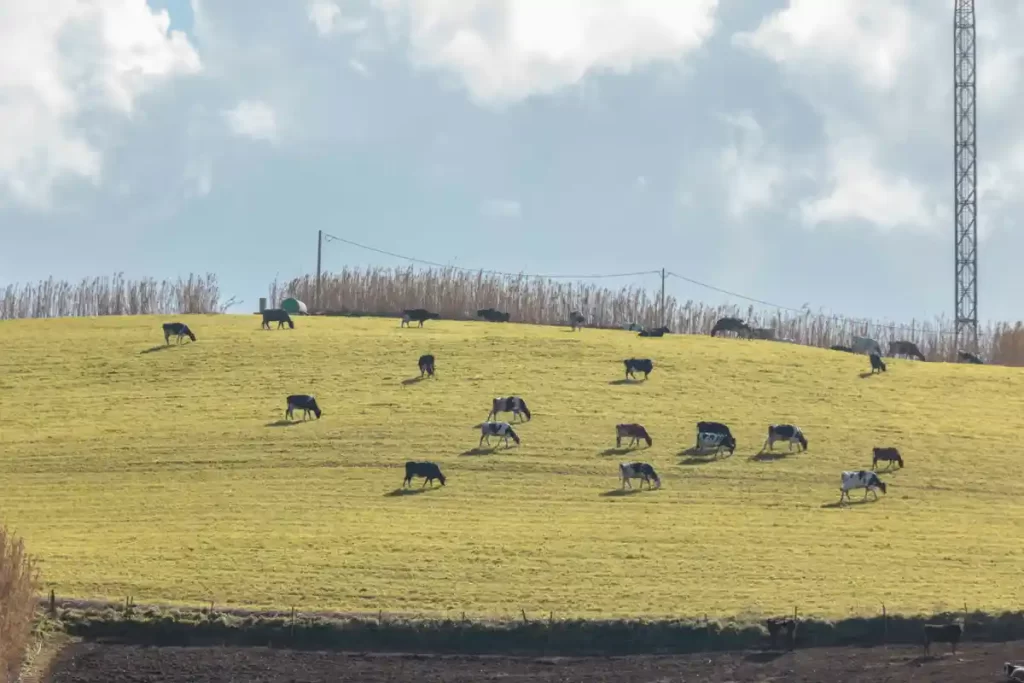
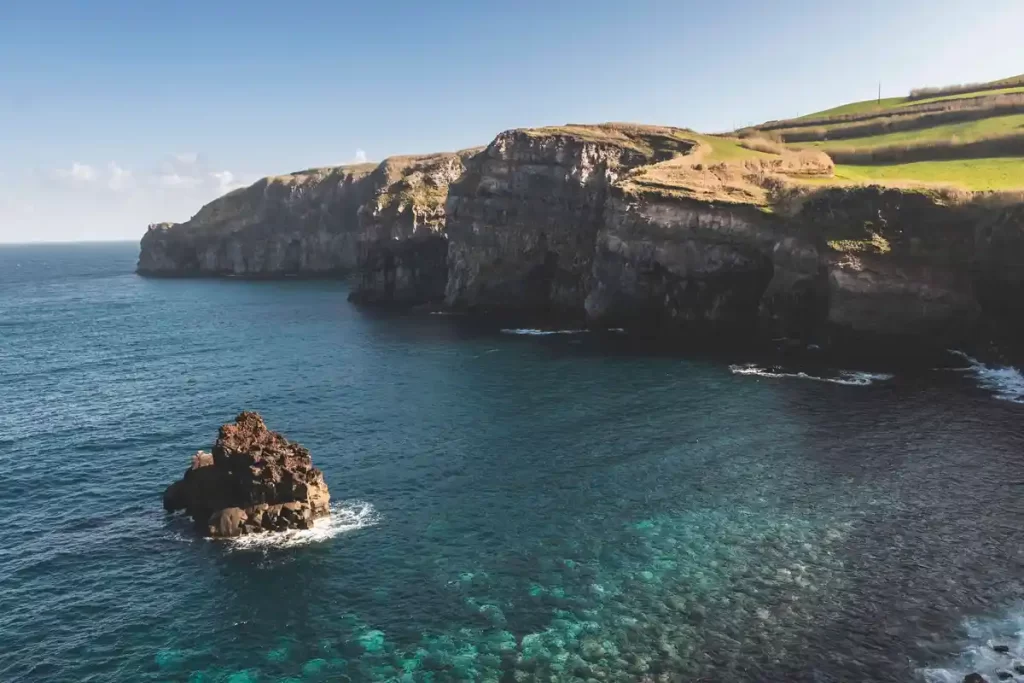
Returned on that bright beam, whose point now raised
Bore him slope downward to the sun now fallen
Beneath the Azores; whether the prime orb,
Incredible how swift, had thither rolled…
– John Milton, Paradise Lost
Faial island is a smaller and more rugged island that packs plenty of beautiful locations in its 67 spq miles (173.06 km2). One such location is Vulcão da Caldeira, a dormant volcano with a 4 mile long circumference trail around its rim. Because of the rich volcanic soil, the trail and inner crater is densely covered in bushes and top-cover ranging across pastel spectrum of greens, reds and oranges. The trail is part of a larger island-wide hike called Dez Vulcões that spans 12 miles (19.3 km) long, a full Faial adventure.
To further express the uniqueness of crater trail, the brief stair-climb from the parking lot to the rim stars with a short tunnel that curves into the wide panoramic view of the ancient caldiera.
Beginning in a counterclockwise fashion, the trail ascends over small humps and meanders around muddy sections made impassable due to rain, other hikers, and livestock (my guess would be donkeys or cows, depending on the mud prints). Besides overcoming the odd appearance of an overtly large mud puddle‑of which can easily be avoided by not going after a recent rainfall‑the trail was well maintained with fences along the edge and wooden steps for the steeper elevation gains.
One factor I was able to appreciate about this hike was due to the islands topography. Because the island is so small, the elevated 360 degree view enabled us to see all the prominent features of the island, from Farol dos Capelinhos in the West to the world famous Marina da Horta in the East. Overall, it took us approximately 2 hours to complete with several breaks scattered throughout.
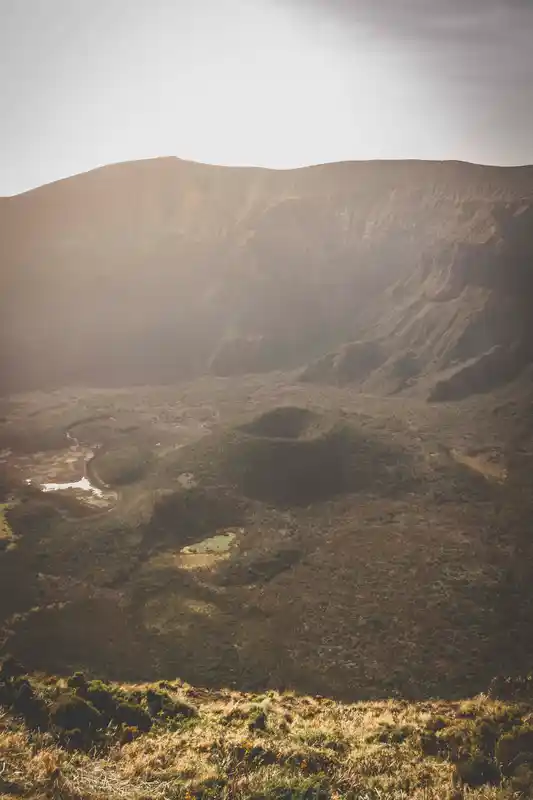
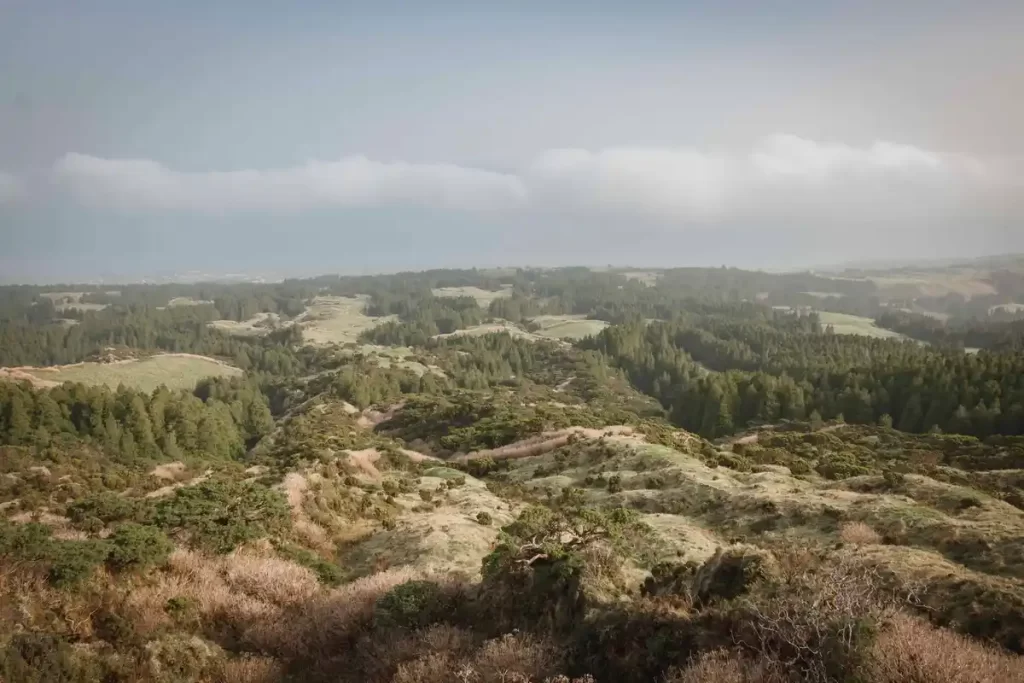
We pulled up to a small white bricked lighthouse with a red top and stepped out to stretch. The pattering of paws rusting the grass alerted us to a small black nose poking out fluffy white fur that danced in the wind. The small puppy jumped up on the brick wall that surrounded the lighthouse and looked at us with no surprise. “He must be trained well not to cross over.” said Kaelin. “Maybe he wants to enjoy the view.” I replied, rotating on my hips as I looked around. We were on the easternmost part of the Island. The ocean stretched beyond us to the horizon , its pusating waves mere ripples at our altitude.
Not that we were aware of our height.
We were on a slanted grassy plateau that blocked from view the sheer cliffs which touched the blue waves in rolling cascades of rocks and boulders. The wind was fierce, blowing back Kaelin’s long curly hair and exposing her tanned freckles across her nose.
Suddenly, the dog started barking. Not a defensive bark, but one of recognition.
Down the field and a man emerge from a sharp drop. He was carrying tackle boxes up towards the only other car in the small parking circle. “Where did he come from?” I wondered.
More than just a beautiful view now, the field turned into a mysterious pathway. My mind began to wander and imagine what lay beyond the bend. I thought about the fisherman. Taking his gear down towards the water and hauling up his catch every day. What did he do for fun? Were cliffs and roaring waves the same to him as endless midwestern corn fields were to me…
Dull?
After eating our lunch of leftover rice and meat casserole, we followed in the footsteps of the local fisherman, trudging through grass and hopping over a wire fence towards the edge of the island. There, the path began to descend steeply out of view, towards what we could only imagine as a rocky beach or outcropping only the locals were familiar with.
An unfinished story.
A brief encounter.
Is this how travelling should be?
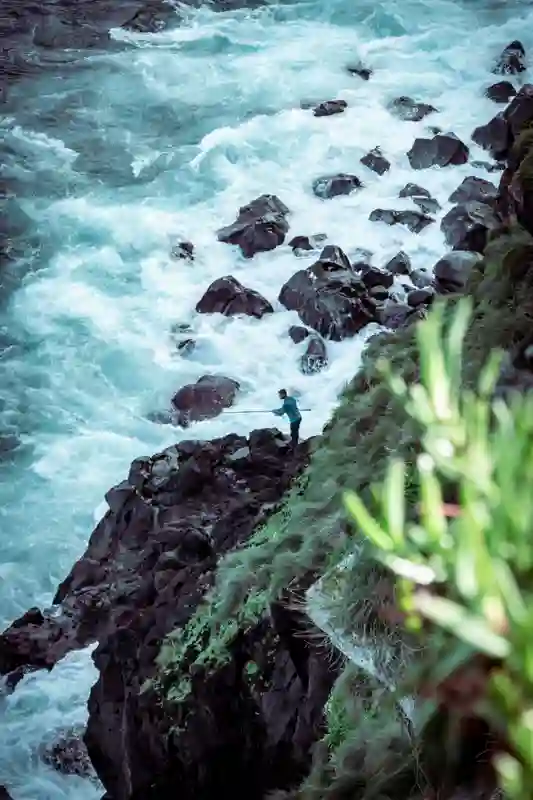
The black volcanic rock grabbed at my feet as I walked from the changing room to the baths. I was surrounded by hardened lava from who knows how long ago, enjoying a large thermal bath tucked away in a narrow cove, bottlenecked by a rough ocean tide every 3 minutes. Located on a cleft of volcanic rock near the bottom of the island, Ponta da Ferraria is the only natural spring on Sao Miguel that sits directly on the ocean.
We enjoyed Kaelin’s first moments in the ocean, commented on the lack of a pool-heater, and then searched around for small nooks in the boulders where the frigid ocean tide crashed into hot thermal vents and pulled out the wonderful warm seismic temperatures.
An elemental tug of war between two extremes.
To prevent the rhythm of waves from dragging oneself to Davy Jones’ Locker, ropes were stretched across the pool every few intervals. I would estimate we were at least 40 feet from the mouth of the cove. The farther away you were, the harder the ocean fought to grasp you with its icy tendrils. I swam out to the last rope to experience the full force of the tidal waves. Sitting on a large submerged rock, I enjoyed feeling the power of the ocean as the water would sweep over me while I held on tightly to the rope.
Earlier that day we explored along the jagged coastline, watching the waves beat against the dark black rock as the sky lit up in a spectacular orange and red sunset concerto.
The thermal baths of Ponta da Ferraria are a good example of the islands volcanic and destructive side. A simile of the great forces at work, isolated among the Atlantic.
Don’t forget shoes to wear from the changing room to the baths.
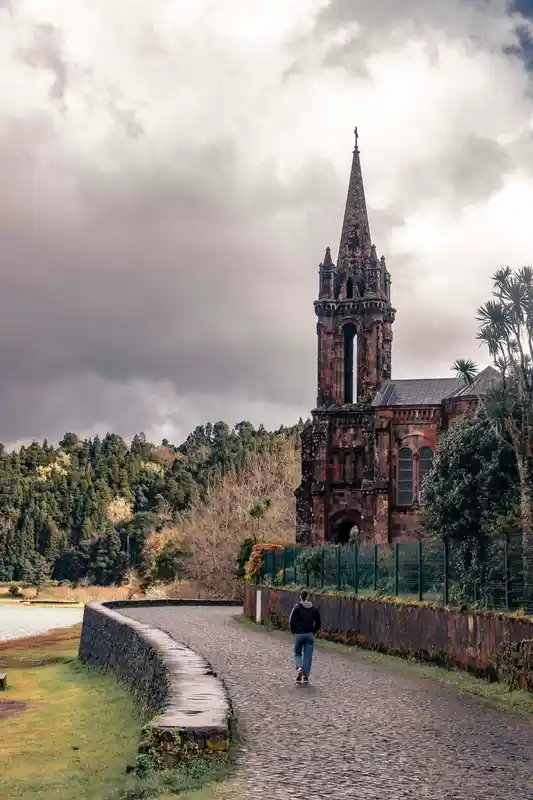

I was one euro short for entry.
I held the coins in my outstretched hand desperately trying to conjure an extra €1 into existence. If there was any way of convincing the lady behind the counter to have pity on us, it would be two innocent tourists hoofing it out in the rain.
“It’s okay.” She said, smiling. “It’s raining so not many people will be coming anyways. Just go on ahead and have fun.”
Mata Jardim José do Canto is an 19th century botanical garden hosting thousands of plant species from around the world. Coincidentally, it holds one Sequoioideae, commonly known as a redwood tree. Towering nearly one hundred feet above my head, it was the first time I ever saw one.
How ironic to see a redwood in the middle of the Atlantic.
The unnatural beauty coupled with pathways leading just the two of us expounded our excitement with each winding bend. Tired of sidestepping ankle deep puddles, Kaelin pulled off her shoes and sighed with relief as the water soothed each step.
With her rolled up jeans and white blouse, she became my adventurous partner searching for new discoveries in uncharted lands.
“Uncharted” at least on our maps.
The employee at the gate did mention a waterfall at the end of the trail.
Our expectations were nonetheless elevated. A small trickle of water down a pretty rock or something seemed extremely evident, nothing more.
Around the final bend, we began to hear what John Keats would describe as “the murmuring surge”.
A small stream plunged across the pathway at our feet, the powerful force of gravity pushing its tendrils back to where we arrived. The trail evaporated into boulders and tree limbs stretching over the stream towards a small pool of water only 20 feet in diameter. There, the source of the thunderous roar of water pounded down a 50 foot dropoff through dense brush and orange rock, showering us in purified mist.
Far from the previously imagined “trickle,” We scrambled across the rocks to gaze face to face with Salto do Rosal, playing with sound as our laughter bounced off the rock and into the trees. Granted it is no Kaieteur Falls. Rather, it was a unique gem in the Azores treasure box. A symbol of the isolation and ruggedness of the Azores Islands.
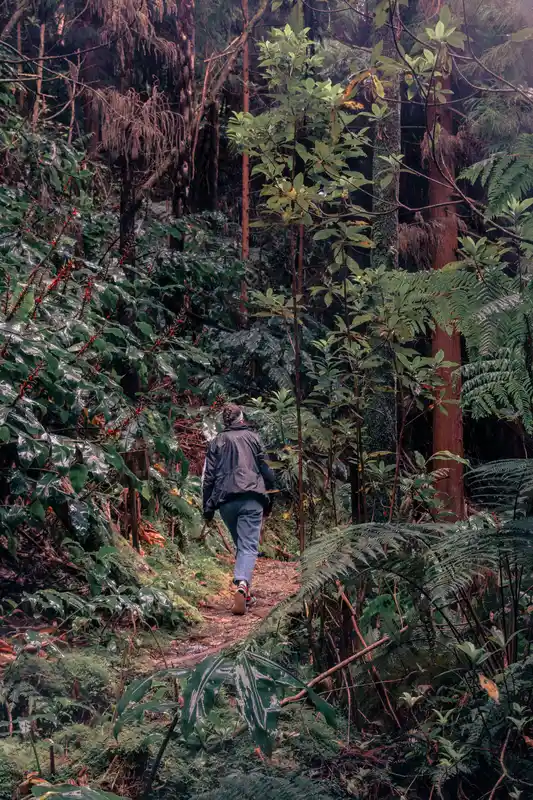

Travelling to the Azores Islands is similar to exploring an abandoned church (of which can be found on Sao Miguel Island); although someone has already walked in your footsteps, built the church around you, and most likely operated as a cultural center for many many families, In the moment of its abandonness you are completely isolated through time itself, surrounded by fading history as the moss grows over protective gargoyles, stain glass begins to fade, and empty pews now are seats for dust.
Azores is rich with hidden gems, from majestic cliffs to dormant volcanoes. Much has happened around you, from a geological perspective and a cultural one. With history dating back to when the Portuguese first arrived to the islands in the 15th century (and maybe even longer than that) and geological events occurring even before that, the Azores remain tributes to the age of exploration, a modern day Atlantis where you can discover something new and profound around each bend in the trail.
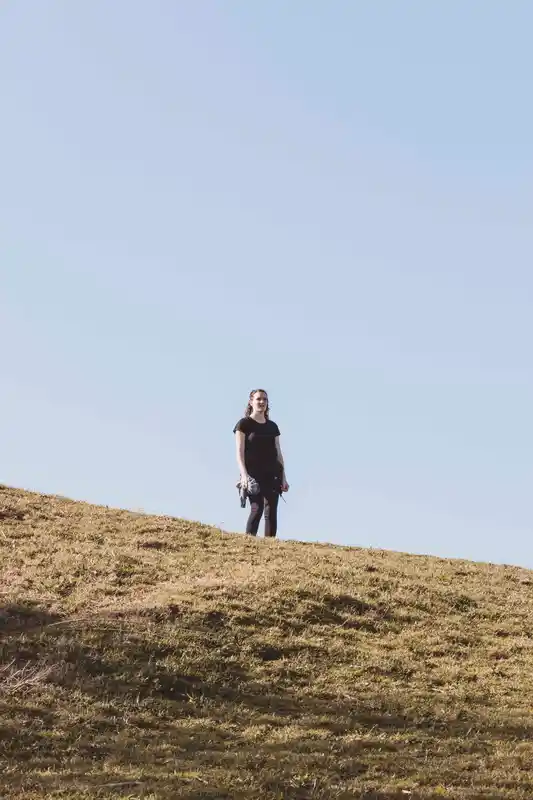
Molon Labe